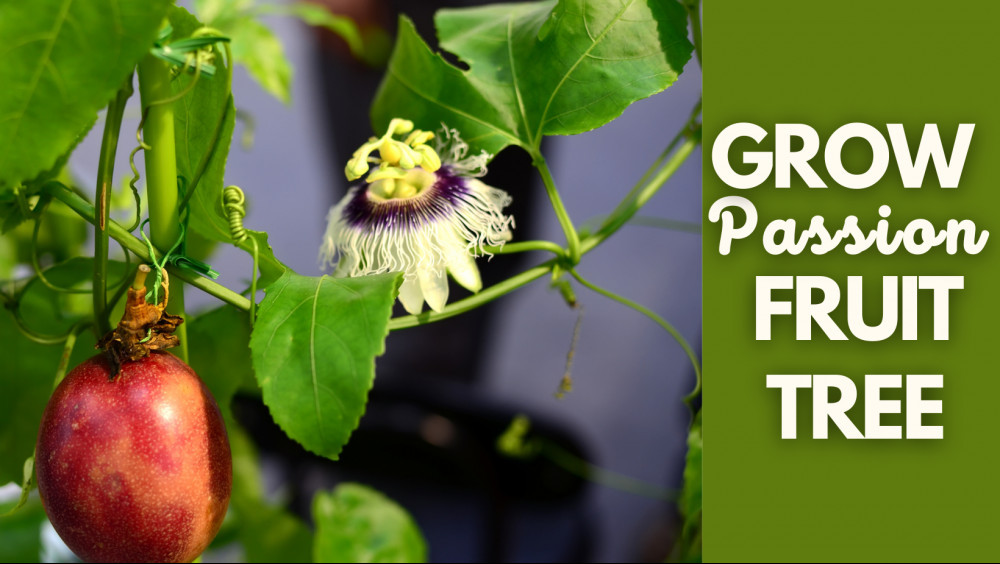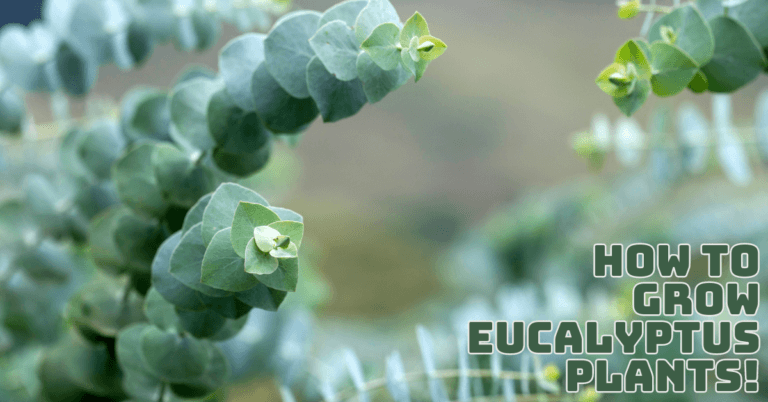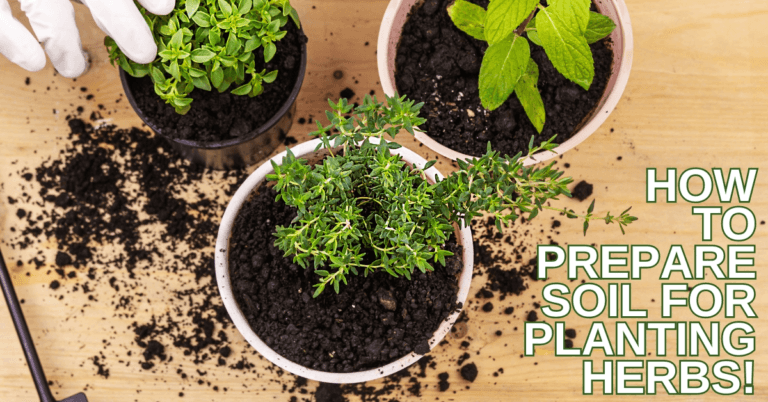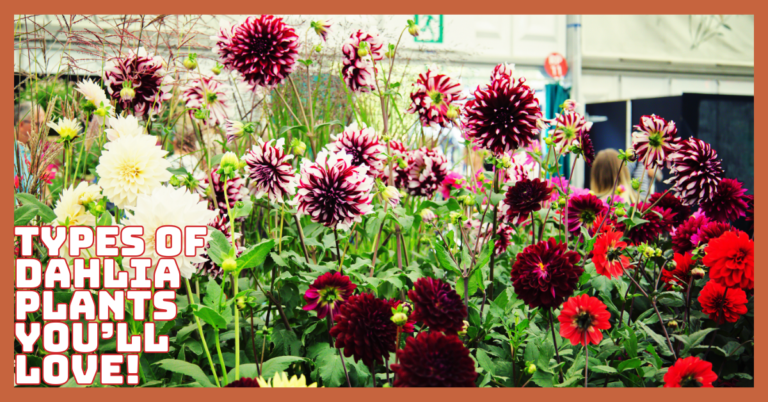11 Easy Steps To Grow A Passion Fruit Tree
11 Easy Steps To Grow A Passion Fruit Tree
The tough-skinned edible fruit of the passiflora vine, which bears passion flowers, is known as passion fruit.
The passiflora vine is a tropical fruiting and flowering plant native to southern Brazil that is now planted in many tropical locations throughout South America.
The passiflora plant grows best in hot areas, and the best time to plant it is after the first frost in spring.
Passiflora edulis bears a deep purple passion fruit with a prune-like exterior and a seed-filled golden interior. In contrast, Passiflora flavicarpa bears a yellow passion fruit, often larger than the purple type.
Passion fruit can be grown at home using the seeds inside the fruit or from a seedling purchased from a nursery.
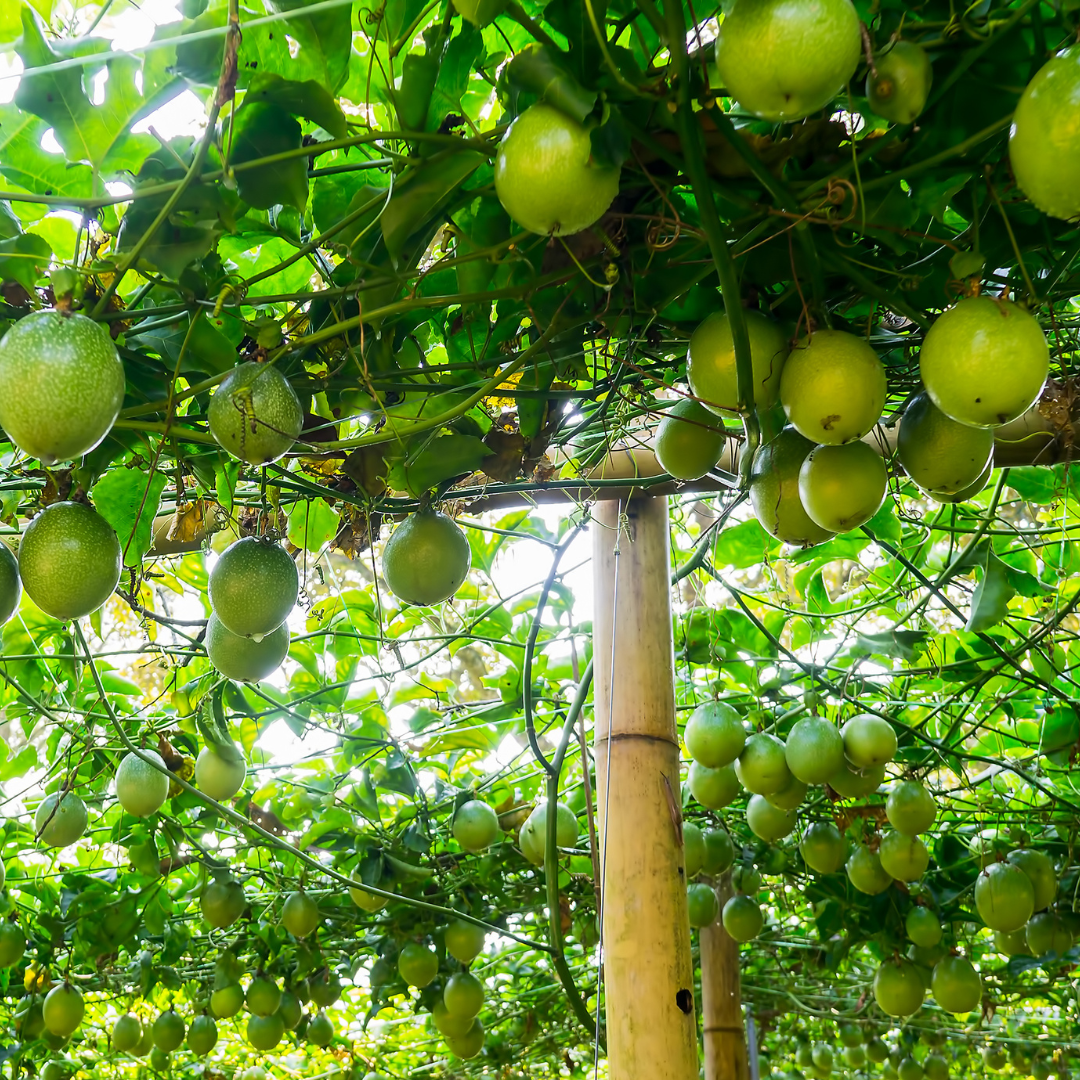
Passion Fruit Nutrition Fact
- Calories: 17
- Fiber: 2 grams
- Vitamin C: 9% of the Daily Value (DV)
- Vitamin A: 8% of the DV
- Iron: 0.29 mg
- Potassium: 2% of the DV
Health Benefits Of Passion Fruit
1. Immune System Booster
Vitamin C, found in passion fruit, is an antioxidant that helps protect the body from free radical damage.
Vitamin C increases the immune system and may improve the body's ability to fight infections by assisting the body in absorbing more iron from plant-based foods.
2. Asthma Relief
Regularly using a passion fruit peel extract supplement reduced asthma symptoms such as sputum production, coughing, and shortness of breath.
3. Defends Against Fungal Infection
The purple variety's seeds include a dimeric protein called passiflin (Pe-AFP1), which has antifungal characteristics.
Pe-AFP1 has an inhibitory impact on a variety of filamentous fungi. Hence it can be utilized as an antifungal agent.
4. May Control Blood Sugar Levels
Passion fruit is the first choice among fruits for diabetics because of its low glycemic index and high dietary fiber content. Low glycemic foods do not rapidly increase blood sugar levels after consumption.
Dietary fibres aid in gradually absorbing sugar into the bloodstream, which helps maintain a healthy blood sugar level. Pectin, a fibre that keeps you full without increasing your calorie intake, is abundant in fruit.
The chemical ‘piceatannol' found in passion fruit seeds may help the body's insulin sensitivity. As a result, the chance of developing diabetes will be reduced.
5. May Strengthen Bones
Passion fruit is high in calcium, magnesium, phosphorus, and iron, among other nutrients. These are the minerals that strengthen your bones and keep them healthy.
Passion fruit has been found in studies to have anti-inflammatory qualities that aid in alleviating joint discomfort.
Types Of Passion Flowers
There are around 400 species in the genus Passiflora, most of which are native to tropical and subtropical parts of the Americas.
They have tiny roots and thrive in the understory of rainforests. Passionflower vines are cultivated solely for their blossoms, and many different vines are grown for their flowers.
Only one Passiflora species, Passiflora edulis Sims, holds the unqualified label of passionfruit among all Passiflora species.
Within this species are two types of passion vine flowers: standard purple and yellow. Passiflora edulis f. flavicarpa Deg. is the botanical name for the yellow form.
Passiflora edulis produces small, round fruits in both of its passionflower variants. Small black seeds covered in a luscious, fragrant orange pulp make up the edible section.
Passion Fruit Varieties
Before starting to grow a passion fruit tree, you must find the right variety; for that, you should know all varieties.
1. Purple Passion Fruit
Compared to other passion fruit types, such as yellow passion, purple passion fruit variations have smaller fruit sizes. Its diameter can range from 5 to 7 cm, and it has a round to oval form with curved ends.
When young, the skin can be purple to dark crimson, with a smooth and waxy texture. The colour may darken as it matures, and you may notice dimples and wrinkles.
Purple passion fruit has a strong aroma that is both tropical and floral. The meat or pulp of this fruit variety contains small, edible black seeds surrounded by a delicious, succulent yellow to orange sack.
2. Banana Passion Fruit
Taxo and Curuba are two more names for this South American species. The fruits are oblong or elongated in shape and can reach a length of 12 cm.
The fruits are grown on vines with gleaming green leaves. The vines can grow up to 7 meters in length.
As the fruit ripens, the thick, leathery skin turns from green to vivid yellow or orange-yellow. On the other hand, the banana passion fruit has a luscious pulp with a strong scent and black seeds.
Apart from its appearance, it has a sweet flavour with a tangy bite and banana undertones, which is where the name derives from.
This can be eaten raw or added to your favorite fruit salad bowl. Eat it raw, or mix it into your favourite fruit salad, drink, or make your dish. You may also make tasty passion fruit juice out of it.
3. Yellow Passion Fruit
Passiflora ligularis, often known as sweet granadilla or grenadia, is a passion fruit cultivar from the Passiflora ligularis family. It's also known as the golden passion fruit by some.
The yellow passion fruit vines are more robust and produce larger fruits than the purple ones.
It has a gelatinous texture and a sweet-tart flavour in its pulp. Raw or cooked into your favorite meals, it's excellent.
The pulp with seeds can make fruit desserts such as fruit salads or cocktails. This golden passion fruit is also delicious as a yogurt or ice cream topping.
4. Giant Passion Fruit
A Passifloraceae species produced the enormous passion fruit. In some areas, it's also known as a gigantic granadilla or barbadine. Its passionflower produces huge fruits that can weigh up to 4 kg.
The skin of this massive granadilla matures to a medium to light yellow colour. It has a pleasant pulp with several seeds in the core. The seed coat is slimy yet succulent at the same time.
This fruit has long been used to heal stomach problems and other ailments such as nervous headaches, diarrhea, asthma, and dysentery.
5. Sweet Passion Fruit
Although passion fruits are sweet, the sweet passion variety is a relatively new addition to the passionfruit family. Worldwide, passionfruit cultivars claim that this variety is the most delectable.
Its distinct hue will shine as it matures, turning from blue to orange. The fragrant white pulp inside has a delightful flavour.
6. Granadilla Passionfruit
Granadillas are a sub-species of the purple type with small to medium-sized fruits that can be up to 8 cm long and 5 cm wide.
It has a long shape and is light in weight. A smooth, rigid, and thick rind, green when young but darkens to an orange-yellow hue as it ages, can also be seen.
Its pulp has a bright, sweet, tangy, and fruity flavour. It has a nutty flavour from the granadilla seeds, which goes well with the tropical and flowery undertones. Its unusual flavour has found its way into sweets, salads, and beverages.
7. Misty Gem Passionfruit
This is a purple type's sub-species. You can look for it at the store because it is one of the most common species. Due to its remarkable depth of flavour, it is the most widely farmed species on the planet.
Because misty gems are purple, their skin is dark purple, but their pulp or flesh can range from light yellow to bright yellow.
8. Maracuya Passion Fruit
Maracuya refers to a huge yellow variety grown in South America, such as Costa Rica and Brazil, and is translated as passion fruit. This is a yellow-type subspecies with large, round to oblong fruits.
When grown, maracuya fruits have wrinkled skin yet are tender to the touch. Its pulp has a floral scent and a sweet, tangy, tropical flavour. These kinds are expected to be accessible over the winter and summer months.
11 Easy Steps To Grow A Passion Fruit Tree
Now, I’ll share all the steps to grow a passion fruit tree. Let’s get started…
Step 1: Select The Seeds
Select a ripe passion fruit from the grocery shop with a slightly crinkled rind, halve it, and remove the seeds.
The seeds are more likely to germinate when your passion fruit is ripe. Using a paper towel, remove any fruit pulp from your seeds.
Step 2: Time To Plant
Passion fruit season begins in the early spring, shortly after the last frost has passed. If you live in an always warm environment, Passiflora, a tropical plant native to hot and humid regions, will give fruit all year.
If you reside in an area where winter temperatures fall below 32° Fahrenheit, winterize your plant by laying a couple of inches of compost over it during the colder months.
Step 3: Soil
Plant your sprouting seedling anywhere in your garden that gets lots of sunshine. Combine your soil with fertilizer or mulch to enrich it, and test the pH to ensure that it is between 6.5 and 7.5. To ensure proper drainage, make sure the soil is loose.
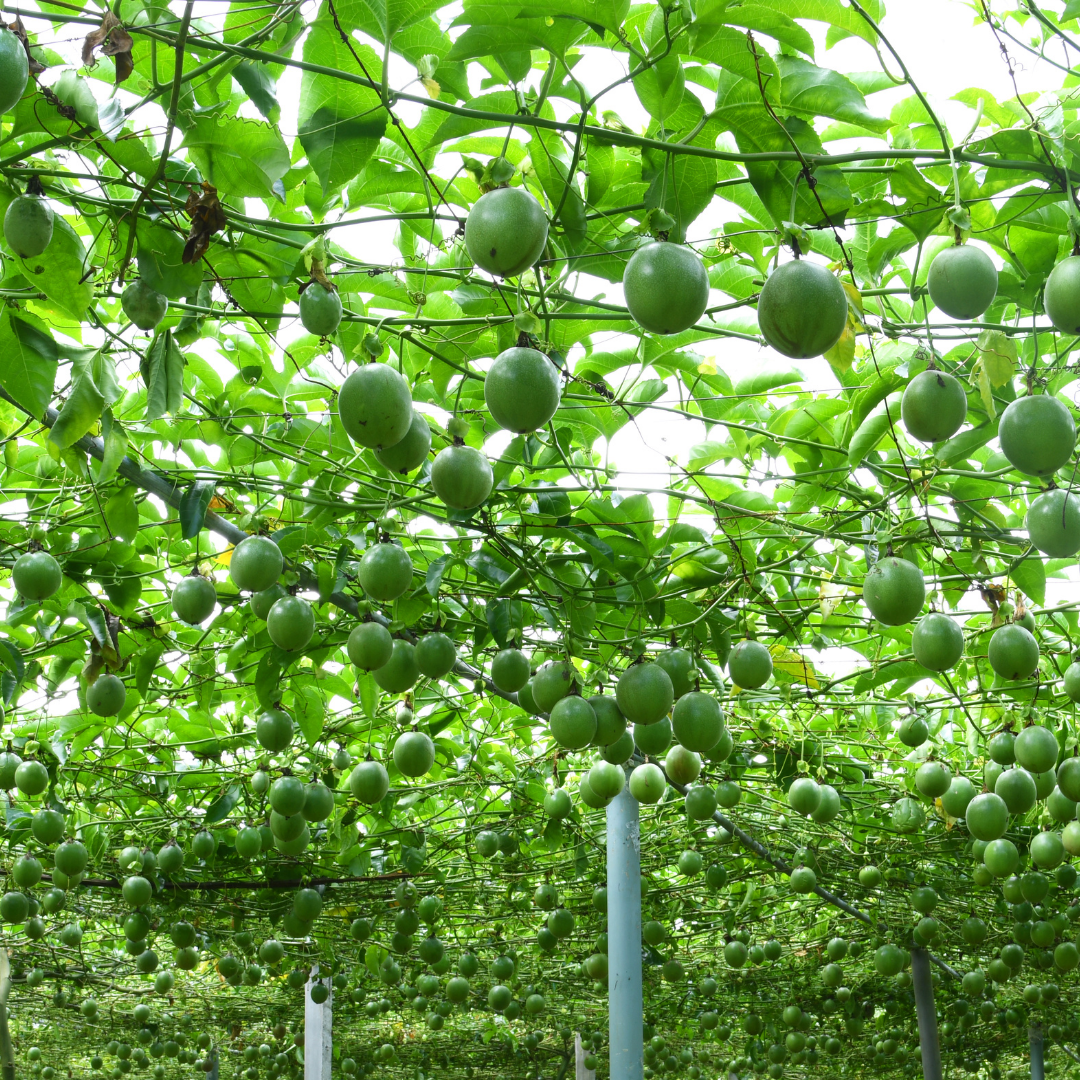
Step 4: Planting
Passionfruit vines are best planted in the spring. Prepare your soil by mixing compost and chicken manure in a one- to two-meter-wide area before planting.
Dig a hole twice the width and depth of the root ball, tease the roots gently, plant the vine, and water it well—mulch with sugarcane, bark chips, or pea straw around the base but not around the stem.
Passionfruit vines can also be planted in large pots with proper support.
Passion fruits are fast-growing plants. A single vining plant can reach a height of 30 to 40 feet. To minimize tangles between stems of different plants, train vines up. Fruit harvesting will be easier if vines are trained on a trellis.
Step 5: Position
They prefer to be planted with adequate ventilation in fertile, free-draining soil rich in organic materials.
Because they are vines, you will need to find a location where you can either build a structure or use an existing one for them to ascend.
If planting many plants, ensure at least 3 meters between them.
Step 6: Pollination
Purple passion fruit trees pollinate themselves. Plants that bear yellow passion fruit do not self-pollinate. They rely on insects to transport pollen from one plant to the next for pollination.
The most efficient passion fruit pollinator is the carpenter bee. Pollination by honeybees is challenging since the pollen is heavy and sticky.
Step 7: Watering
You should be aware of watering plants to grow a passion fruit tree. Passion fruits are thirsty plants that need to be watered regularly.
You'll need to be more diligent when your vine is young and throughout the flowering or fruiting season. During the week, water your passion fruit a couple of times.
If the weather is getting warmer, you may need to do this more frequently to keep your plant from dehydrating.
Water evenly across the entire root system to ensure your vine gets the most hydration possible.
Step 8: Re-Potting
If you plant in a container, when your seedling is about 4 inches tall, re-pot it in a larger pot with a diameter of 6-8 inches.
Gently dig the seedling out, careful not to damage the root system, and place it in a larger container with fresh potting mix, watering immediately.
Provide your plant with climbing support so that its vines can begin to grow. Your passionfruit plant should have a good center vine—about eight inches in height—and be ready to place in the garden against a trellis after approximately six weeks.
Step 9: Fertilizing
Feed your passionfruit plant with well-watered citrus food or chicken manure in the spring and autumn.
Ensure that the fertilizer is delivered uniformly throughout the root system. Overfeeding or fertilizing with nitrogen-rich fertilizers can encourage leaf growth at the expense of flowers and fruits.
Step 10: Harvesting
Passion fruit takes 12 to 18 months to mature, so planting a seed or seedling in early spring should be ready to harvest by early summer or fall the following year.
The plants will flower and have fruit all year if you reside in a tropical climate. When the rind of your passion fruit is slightly wrinkled and vividly coloured, it is ripe and ready to eat. They'll tumble on the ground if you don't pluck them off the vine.
Step 11: Pruning
It's a no-brainer to prune a passion fruit plant. Unlike other vines that require continual upkeep and pruning, your fruit-bearing vine only requires light pruning now and then to keep its shape and development in check.
Thinning out stray tendrils or obstructive stems is what we're talking about. Otherwise, getting those shears out and trim your plant is unnecessary.
When fresh sprouts emerge in the spring, prune off a third of the surplus growth. Remove what is essential and avoid pulling the vine's main branches to avoid permanently injuring your passion fruit.
Problems You May Face
1. Not Fruiting
Passionfruit growers frequently complain about a shortage of fruit. Several things could be to blame, but the most prevalent is poor pollination.
Changes in the weather, such as frequent, heavy rain and variable temperatures, might impact bees' critical work. Overfertilization might cause your vine to flourish yet produce no flowers or fruit.
2. Fruit Dropping
It could be due to irregular watering, fungal infections, or fruit flies if your passionfruit is fruiting, but the fruits are falling off the plant.
3. Yellow Leaves
Have you ever wondered why your passionfruit leaves have turned yellow? Woodiness virus is the most prevalent cause, but it could also be caused by magnesium or nitrogen insufficiency or “winter yellows” caused by cold, windy conditions.
4. Spots
If you see spots on your vine's leaves or fruit, it's most likely due to a fungus called alternata spot or brown spot.
Consumption Of Passionfruit
Passion fruit is best eaten with a spoon, right from the shell, with seeds and all! It's delicious, but it's also decadent. We also like to scoop out the pulp and put it on top of granola with different nuts and seeds.
Passion fruit juice is also delicious when mixed with kombucha. We've also used the juice in homemade popsicles and baked items.
To juice passion fruit, we scoop the pulp into a fine-mesh strainer set over a bowl, then mix and mash the pulp with a rubber spatula, pressing the juice down through the sieve into the basin below. Some people produce preserves from juice, such as jelly, syrup, or curd! It's also possible to freeze the juice.
Conclusion
Passion fruit farming is extremely profitable, providing growers a steady cash stream. It can grow in various climate zones, from the highlands to the lowlands.
Passion fruit is in high demand, both domestically and internationally. Please comment here if you face any problems growing a passion fruit tree.
I trust you enjoyed this article on the 11 Easy Steps To Grow A Passion Fruit Tree. Please stay tuned for more blog posts to come shortly. Take care!
JeannetteZ
>>>Please click here to read my all-inclusive article about Container Gardening<<<
>>>Are you interested in homegrown herbs and medicine? Please click here to find out more about it!<<<
Your Opinion Is Important To Me
Thoughts? Ideas? Questions? I would love to hear from you. Please leave me your questions, experience, and remarks about this article on the 11 Easy Steps To Grow A Passion Fruit Tree, in the comments section below. You can also reach me by email at Jeannette@Close-To-Nature.org.
Disclosure
This post may contain affiliate links. I earn from qualifying purchases as an Amazon Associate and other affiliate programs. Please read my full affiliate disclosure.
You might also enjoy these blog posts:
7 Easy Steps Of Growing Citrus Trees In Containers
9 Easy Steps Of Growing Peaches In Containers
Easy Ways To Grow Pineapple On A Balcony
8 Easy Steps To Growing Kale In Containers

